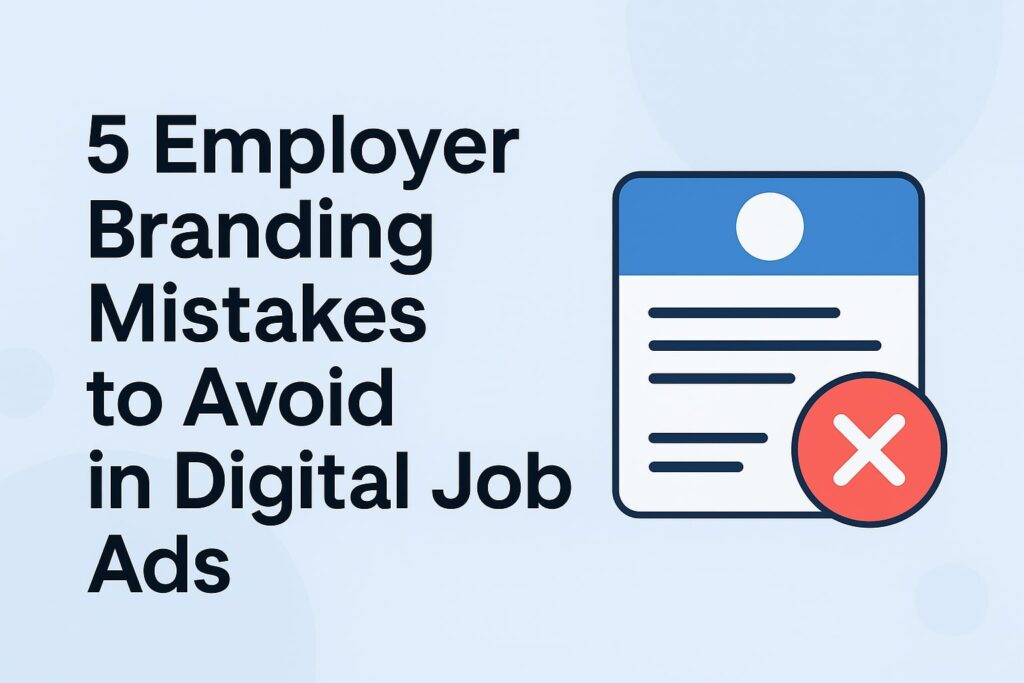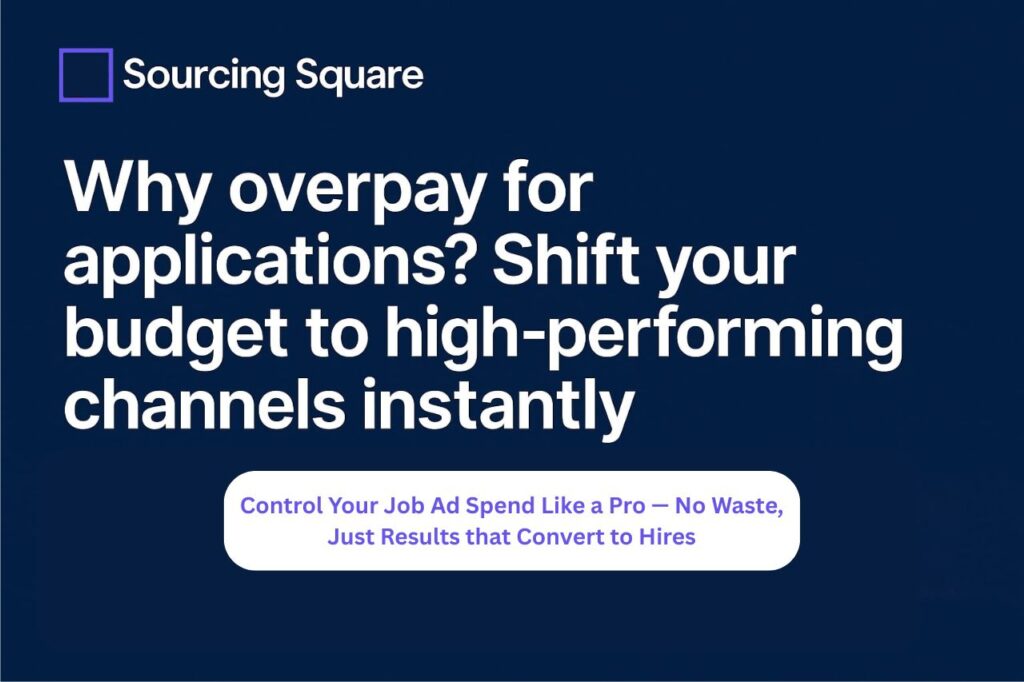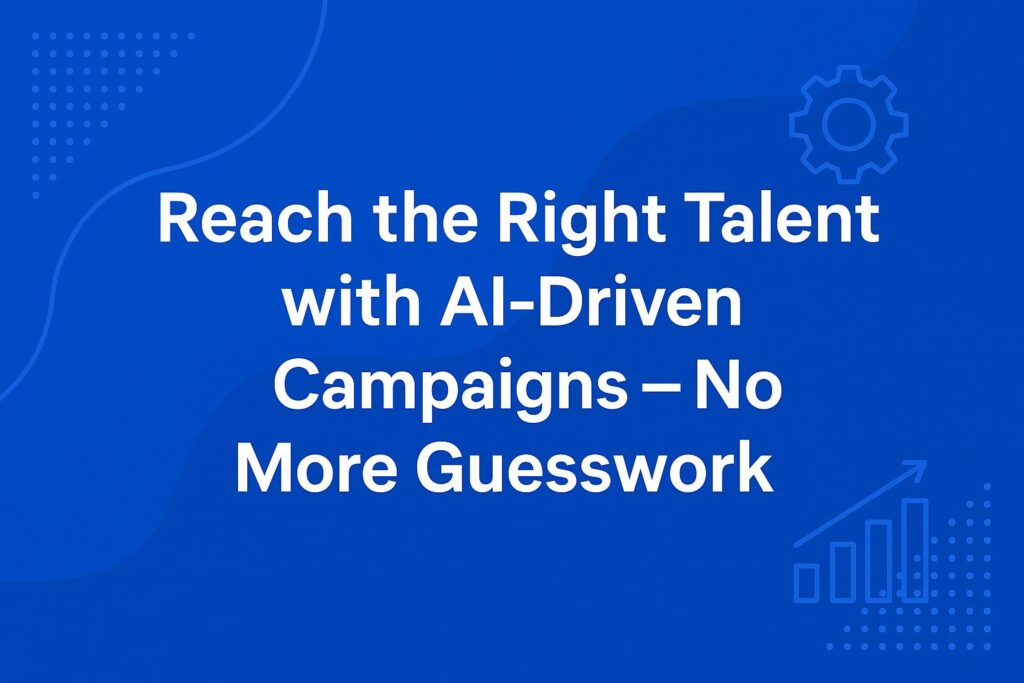In today’s competitive job market, effective recruitment strategies are vital for businesses to attract top talent. Job advertising is a significant component of these strategies, but it’s not just about spending money—it’s about spending it wisely. Unfortunately, many organizations fall prey to common mistakes that can drain their advertising budget without yielding desired results.
In this article, we’ll delve into some of these pitfalls and offer solutions to maximize return on investment (ROI) in job advertising expenditure.
Lack of Targeting
One of the biggest mistakes in job advertising is casting too wide a net. While it might seem logical to reach as many candidates as possible, this approach often leads to inefficiency and wasted resources. Instead, focus on targeting your ads to reach specific demographics, geographic regions, or professional networks relevant to the position you’re hiring for. Utilize advanced targeting options provided by platforms like LinkedIn, Indeed, or specialized industry job boards to narrow down your audience effectively.
Ignoring Analytics
Many companies overlook the importance of tracking and analyzing the performance of their job ads. Without insights into metrics such as click-through rates, application rates, and cost per hire, it’s impossible to gauge the effectiveness of your advertising campaigns. Implementing robust analytics tools and regularly monitoring key performance indicators (KPIs) allows you to identify which channels and strategies are delivering the best results, enabling you to allocate your budget more efficiently.
Neglecting Employer Branding
Job advertisements should not only attract candidates but also reflect positively on your employer brand. Neglecting to showcase your company culture, values, and unique selling points can result in missed opportunities to engage with top talent. Invest time and resources in crafting compelling employer branding messages that resonate with your target audience. Highlight employee testimonials, company achievements, and perks/benefits to differentiate yourself from competitors and attract candidates who align with your organizational culture.
Poorly Written Job Descriptions
A common oversight is underestimating the importance of clear and concise job descriptions. Vague or overly complicated job postings can deter qualified candidates and lead to a flood of irrelevant applications. Ensure that your job descriptions are detailed yet easy to understand, outlining key responsibilities, qualifications, and expectations clearly. Use language that appeals to your target audience and avoid industry jargon or buzzwords that may confuse or alienate potential applicants.
Overlooking Mobile Optimization
In an increasingly mobile-centric world, failing to optimize job advertisements for mobile devices can severely limit your reach. Many candidates prefer to search and apply for jobs using smartphones or tablets, and if your ads aren’t mobile-friendly, you risk losing out on valuable talent. Ensure that your website and application process are optimized for seamless mobile experience, including fast-loading pages, responsive design, and easy navigation.
Relying Solely on Paid Advertising
While paid advertising can be effective, it shouldn’t be your only recruitment strategy. Over-reliance on paid channels can lead to inflated advertising costs and overlooks potential candidates who may not actively search for jobs online. Supplement your paid campaigns with organic methods such as employee referrals, networking events, and partnerships with educational institutions or professional organizations. Building a diverse recruitment pipeline increases your chances of finding the right candidates while reducing dependency on costly advertising.
Failing to Adapt
The job market is constantly evolving, and recruitment strategies must adapt accordingly. Failing to stay updated with industry trends, emerging technologies, and shifting candidate preferences can render your advertising efforts obsolete. Regularly review and refine your advertising strategies based on feedback, market research, and changing business needs. Experiment with new platforms, messaging techniques, and targeting options to stay ahead of the competition and maintain a competitive edge in talent acquisition.
Here’s some other common mistakes to avoid in job advertising expenditure and a heads up on optimizing recruitment efforts effectively.
Ignoring Diversity and Inclusion
Overlooking diversity and inclusion in job advertising can significantly impact the quality and diversity of your applicant pool. Research shows that diverse teams outperform homogenous ones, bringing different perspectives and experiences to the table. Make a conscious effort to craft inclusive job advertisements that appeal to candidates from diverse backgrounds. Use gender-neutral language, showcase your commitment to diversity initiatives, and highlight opportunities for career growth and advancement for underrepresented groups.
Failing to Leverage Employee Advocacy
Your employees can be your most powerful advocates in attracting top talent, yet many organizations fail to leverage their potential effectively. Encourage employees to share job postings on their social networks, participate in referral programs, and contribute to employer branding efforts. Employee-generated content, such as testimonials, behind-the-scenes photos, and day-in-the-life stories, can resonate with candidates on a personal level and humanize your organization’s brand. Cultivate a culture of employee advocacy and recognize and reward employees who actively promote job openings.
Neglecting Niche Platforms and Communities
While major job boards and social media platforms are popular choices for advertising vacancies, niche platforms and online communities can offer access to highly targeted talent pools. Explore industry-specific forums, professional associations, and specialized job boards relevant to your sector or niche. These platforms often attract candidates with specialized skills and experiences who may not be active on mainstream channels. By tapping into these niche networks, you can reach candidates who are more likely to possess the specific qualifications and expertise you’re seeking.
Ignoring Employer Reviews and Reputation
In today’s digital age, job seekers have access to a wealth of information about potential employers, including employee reviews and company ratings on platforms like Glassdoor, Indeed, and LinkedIn. Ignoring your employer reputation can be a costly mistake, as negative reviews and poor ratings can deter top talent from applying to your organization. Proactively manage your employer brand by encouraging satisfied employees to leave positive reviews, addressing negative feedback constructively, and actively engaging with candidates and employees on social media and review platforms. Showcase testimonials, awards, and accolades to build trust and credibility with prospective candidates and reinforce your status as an employer of choice.
In conclusion
Optimising job advertising expenditure requires a strategic approach that addresses common pitfalls and maximizes ROI. By avoiding the mistakes outlined above and implementing proactive measures to target, analyze, and adapt your recruitment efforts, you can attract top talent more effectively while minimizing wasted resources. Remember, recruitment is not just about filling positions—it’s about building a strong and sustainable workforce that drives organizational success.
Sourcing Square revolutionizes job advertising expenditure with its programmatic job advertising platform. By leveraging advanced algorithms and real-time data analysis, it optimizes ad placements across multiple channels, ensuring maximum reach and efficiency. With targeted audience segmentation and performance tracking, Sourcing Square delivers cost-effective solutions, helping businesses attract top talent while minimizing wasted resources




